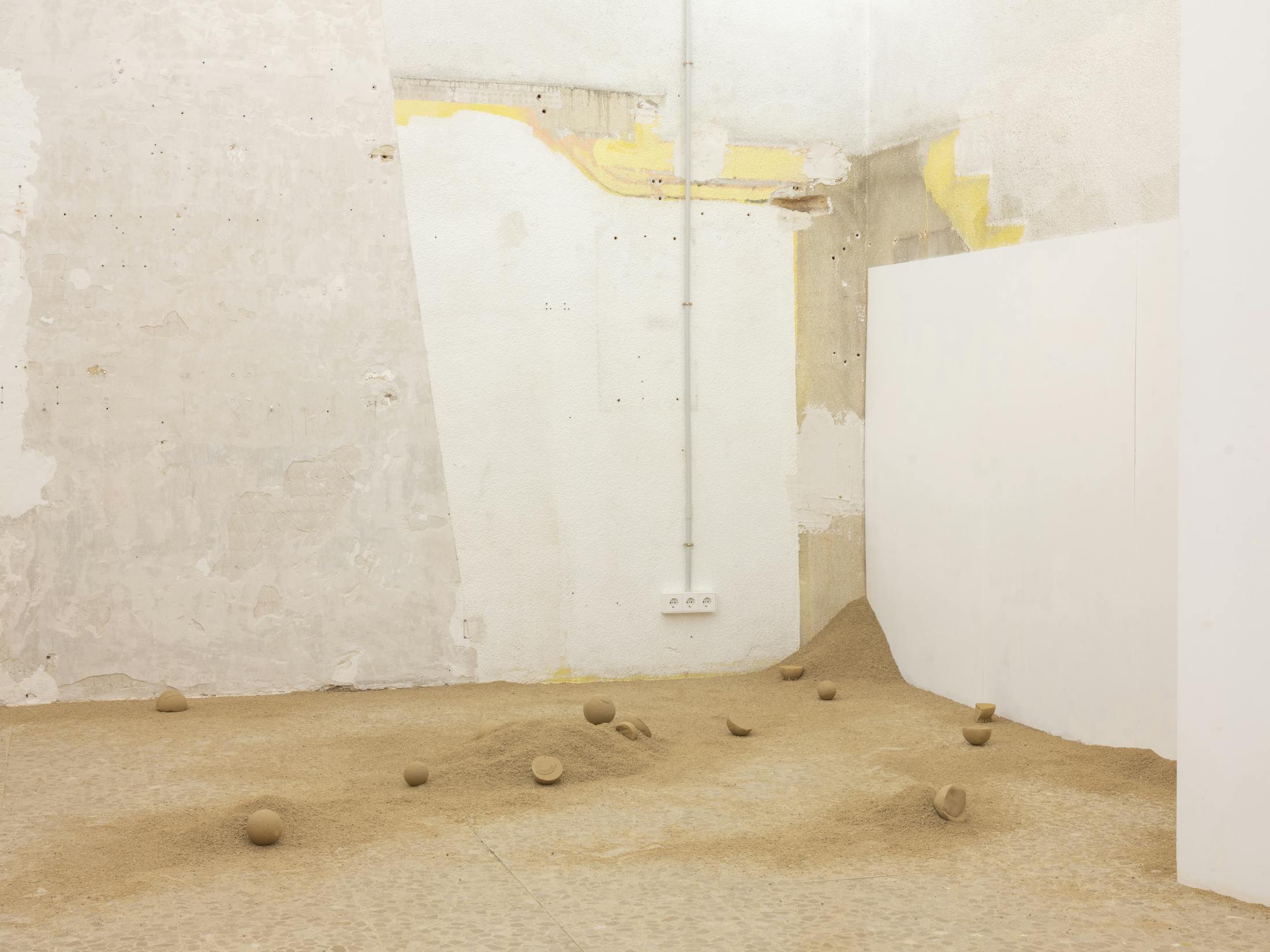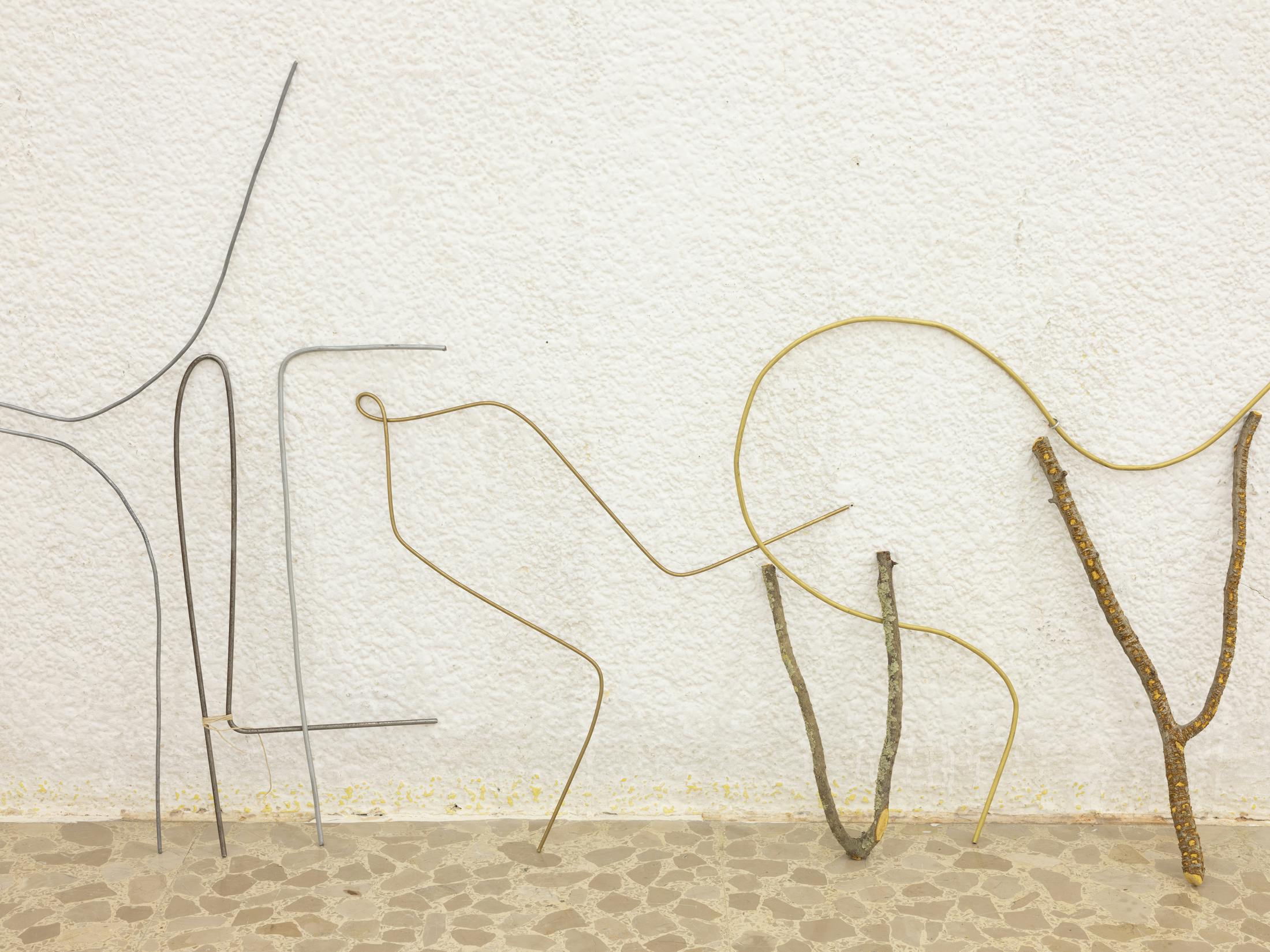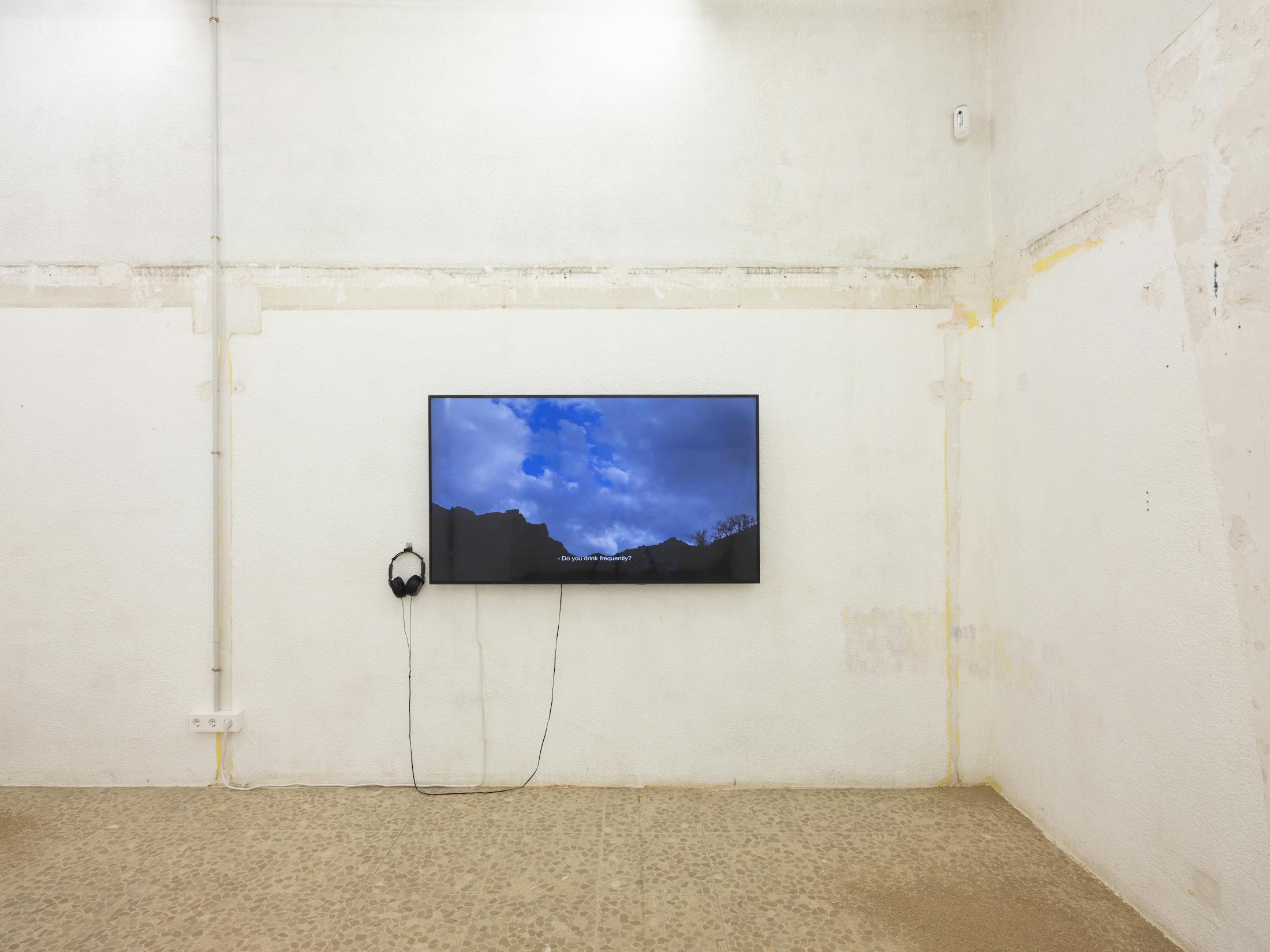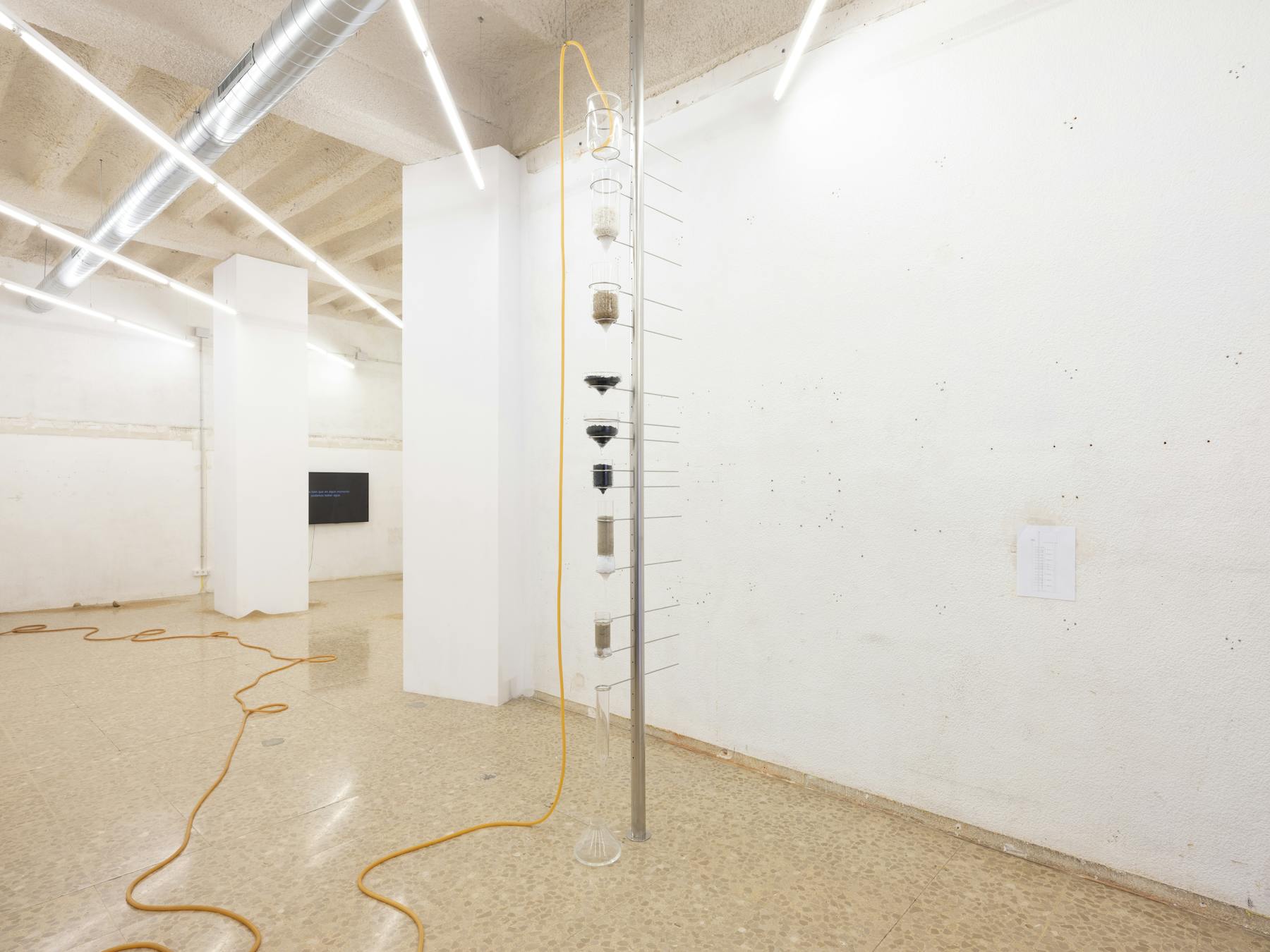Interchanges unfolds imaginaries around water, proposals crossed by eco-fiction and the versatility of an essential resource that is increasingly scarce on the planet. The exhibition presents the works of Mar Guerrero, Stella Rahola Matutes and Laia Ventayol, which explore the interrelationship between humans and water, a relationship that can be analyzed both from the point of our dependence on it, but also from the irreversible effects that human actions have caused to it. It is a territory that is as real as it is fictional. These works point to a dialogue, but also to a tension between scientific knowledge and other forms of knowledge. The title interchanges refers to the relationships and affects between natural resources and human life.






The group of sculptural objects that Ventayol is displaying, materialize the image of the video, and are made by the people participating in it. They form a kind of collection of rods, a simple, even precarious instrument, which becomes an essential appendage to connect with the telluric forces.



